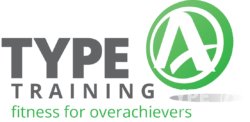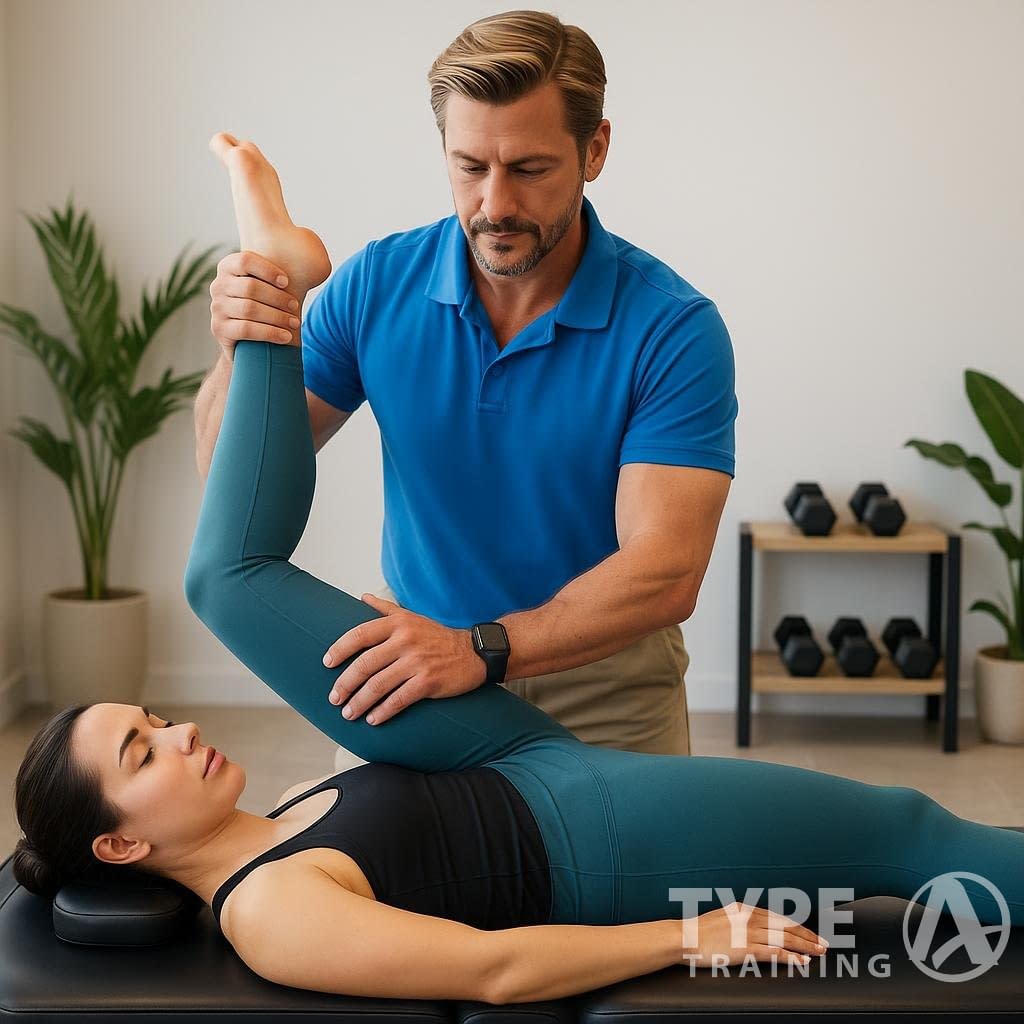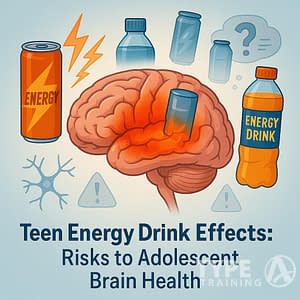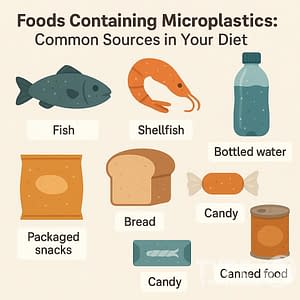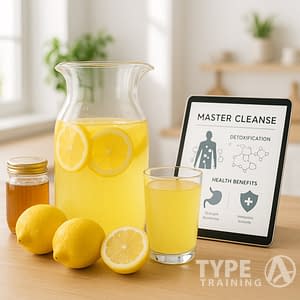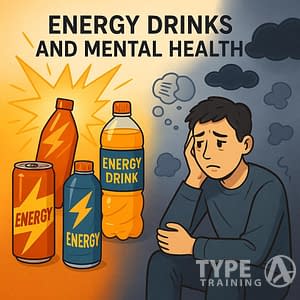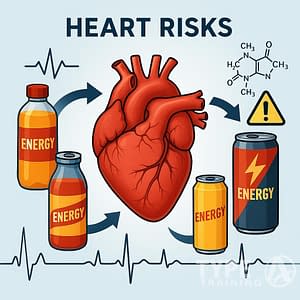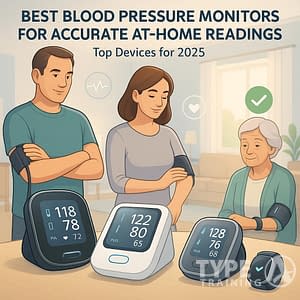Choosing between assisted stretching and massage therapy can be challenging when seeking effective bodywork. Both offer unique benefits for relaxation, flexibility, and recovery.
Assisted stretching involves active participation and feedback. It focuses on improving range of motion and preventing injuries. Meanwhile, massage therapy provides a more passive experience aimed at relaxation and muscle tension relief.
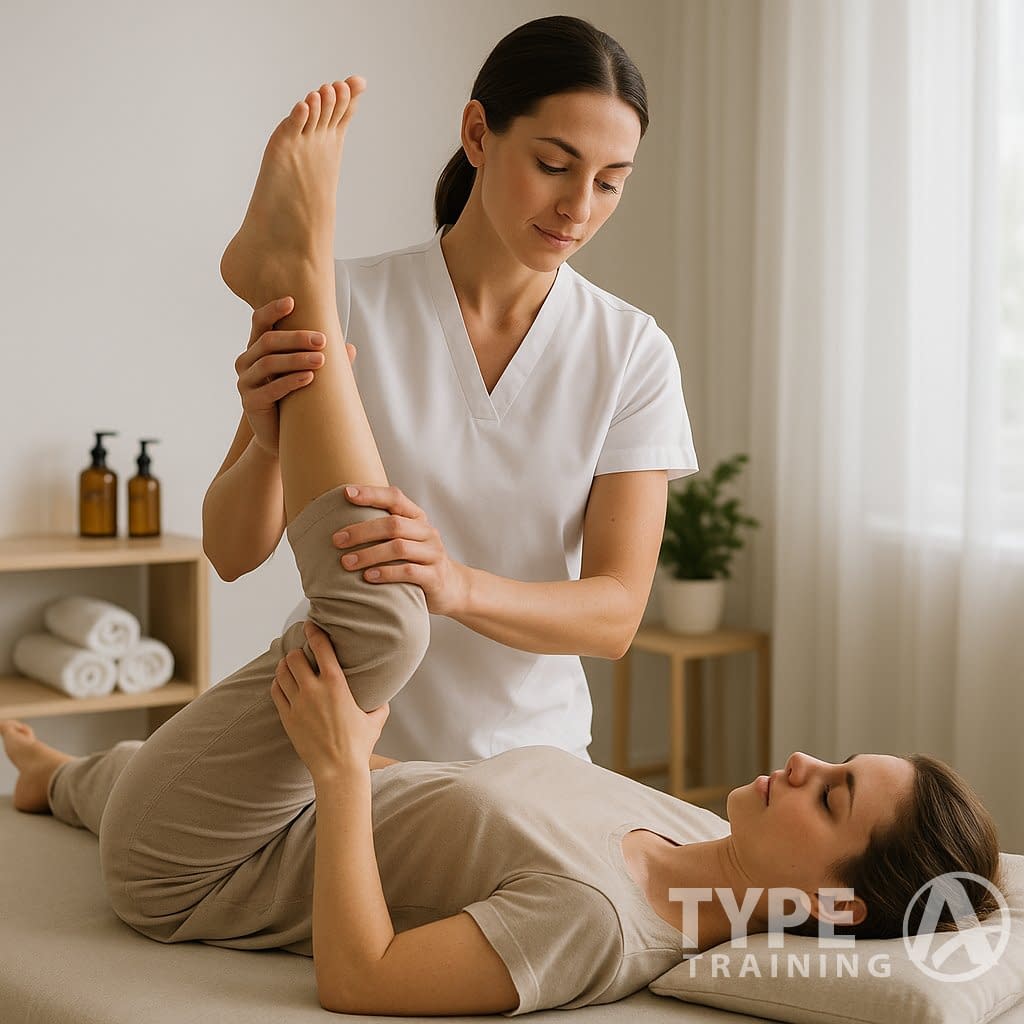
Assisted stretching sessions typically require you to engage with the practitioner, communicating your sensations and limits. This interactive approach helps target specific areas of tightness and improves overall mobility.
Popular posts:
Meanwhile, massage therapy allows you to relax completely as the therapist works on your muscles. This promotes circulation and reduces stress.
Your choice between these two modalities depends on your personal goals and preferences. If you’re looking to enhance flexibility and address movement restrictions, assisted stretching might be the better option. On the other hand, if you want deep relaxation and relief from muscle tension, massage therapy could be more suitable.
Some practitioners even offer combination sessions, allowing you to experience the benefits of both techniques in a single appointment.
Key Takeaways
- Assisted stretching is interactive and targets flexibility, while massage therapy is passive and focuses on relaxation.
- Your choice between the two depends on your specific wellness goals and preferences.
- Both techniques can be integrated into your self-care routine for optimal recovery and body maintenance.
Understanding Assisted Stretching
Assisted stretching is a hands-on technique that enhances flexibility, mobility, and range of motion. This method involves a trained professional guiding you through stretches to maximize their effectiveness and safety.
Benefits of Assisted Stretching
Assisted stretching improves flexibility and mobility, helping you move more freely in your daily life. It can enhance your athletic performance by increasing your range of motion and reducing the risk of injuries.
You’ll experience better circulation as the stretches promote blood flow throughout your body. This improved blood flow can aid in muscle recovery and reduce post-workout soreness.
Assisted stretching also helps correct muscle imbalances. By targeting specific muscle groups, it can alleviate tension and improve your overall posture.
How Assisted Stretching Works
During an assisted stretching session, a trained professional guides you through various stretches. They apply gentle pressure to help you achieve a deeper stretch than you might on your own.
The practitioner will communicate with you throughout the session, asking for feedback on what you’re feeling. This interaction ensures the stretches are effective and comfortable.
Assisted stretching often incorporates active stretching techniques. You’ll engage your muscles while the practitioner provides resistance, enhancing the stretch’s effectiveness.
Types of Assisted Stretching Techniques
Static stretching involves holding a stretch position for a set duration. Your practitioner will gently push or pull to deepen the stretch while you remain relaxed.
Meanwhile, dynamic stretching incorporates movement. The practitioner guides you through controlled motions that gradually increase your range of motion.
Lastly, active isolated stretching (AIS) involves short, repetitive stretches. You’ll actively contract the opposing muscle group while the practitioner assists in stretching the target muscle.
Assisted Stretching and Proprioceptive Neuromuscular Facilitation
Proprioceptive Neuromuscular Facilitation (PNF) is an advanced form of assisted stretching. It involves alternating between muscle contraction and relaxation to achieve a deeper stretch.
In a typical PNF stretch, you’ll contract the muscle being stretched for a few seconds. Then, you’ll relax as the practitioner gently pushes you further into the stretch.
PNF techniques can significantly improve flexibility and range of motion. They’re particularly effective for athletes and those recovering from injuries.
Exploring Massage Therapy
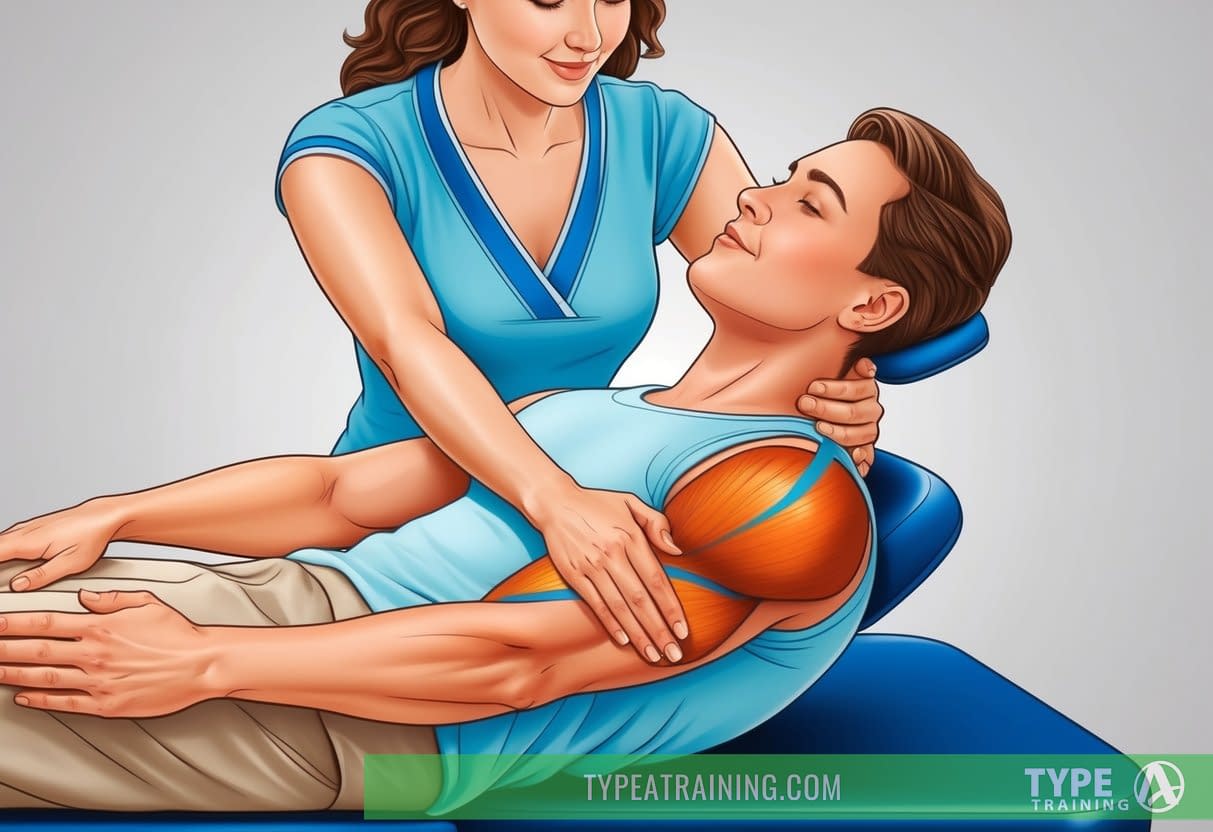
Massage therapy offers a wide range of techniques to address physical and mental well-being. It focuses on manipulating soft tissues to promote relaxation, reduce muscle tension, and enhance overall health.
Holistic Benefits of Massage Therapy
Massage therapy provides numerous advantages for your body and mind. It promotes deep relaxation by activating the parasympathetic nervous system, helping you unwind and de-stress. Regular massages can significantly reduce anxiety and improve sleep quality.
You’ll experience increased blood flow throughout your body, which aids in nutrient delivery and waste removal from tissues. This improved circulation can speed up healing processes and reduce inflammation.
Massage also helps break down adhesions and scar tissue, improving your range of motion and flexibility. It can be particularly beneficial for those dealing with chronic pain conditions or recovering from injuries.
Key Modalities in Massage Therapy
Various massage techniques target different needs and preferences:
- Swedish Massage: Gentle, flowing strokes to promote relaxation
- Deep Tissue Massage: Targets deeper muscle layers to release chronic tension
- Sports Massage: Focuses on preventing and treating athletic injuries
- Hot Stone Massage: Uses heated stones to ease muscle tension
- Shiatsu: Japanese technique involving finger pressure on specific body points
Each modality offers unique benefits, allowing you to choose the most suitable approach for your specific needs. Your therapist may combine techniques to create a customized treatment plan.
Massage Therapy for Muscle Recovery
Massage therapy is an effective tool for muscle recovery, especially after intense physical activity. It helps reduce delayed onset muscle soreness (DOMS) by increasing blood flow to affected areas.
During a massage, your therapist will work on:
- Breaking down knots and adhesions
- Reducing muscle tension
- Flushing out metabolic waste
- Promoting the release of endorphins
These actions help speed up recovery time, allowing you to return to your activities sooner. Regular massages can also help prevent future injuries by maintaining muscle flexibility and reducing chronic tension.
Connective and Fascial Tissue Techniques
Massage therapy isn’t limited to muscles alone. Specialized techniques target connective and fascial tissues, which play crucial roles in your body’s overall function and mobility.
Myofascial release is a popular technique that focuses on releasing restrictions in the fascia, the connective tissue surrounding muscles and organs. This approach can:
- Improve flexibility and range of motion
- Reduce pain and muscle tension
- Enhance posture and body awareness
Trigger point therapy is another effective method, targeting specific points of tension within the fascia. By applying pressure to these areas, your therapist can help alleviate referred pain and improve muscle function.
Comparative Analysis of Assisted Stretch and Massage Therapy
Assisted stretching and massage therapy offer unique benefits for muscle care and recovery. Each approach addresses specific aspects of physical wellness, from tension relief to improved flexibility.
Addressing Muscle Tension and Soreness
Assisted stretching actively targets muscle tightness through guided movements. A practitioner helps you stretch beyond your normal range, releasing tension in specific muscle groups. This can be especially effective for chronic tightness.
Meanwhile, massage therapy uses direct pressure and manipulation to soften and release muscle tissue. It excels at addressing localized soreness and knots. The hands-on approach can provide immediate relief from discomfort.
Both methods can reduce muscle soreness, but in different ways. Assisted stretching prevents tightness build-up, while massage targets existing tension.
Role in Enhanced Mobility and Flexibility
Assisted stretching directly improves your range of motion. A professional guides you through stretches that may be difficult to perform alone, helping you safely extend beyond your current limits.
This method is particularly effective for increasing joint mobility. By working through various planes of movement, assisted stretching can address restrictions in multiple joints simultaneously.
On the other hand, massage therapy enhances flexibility indirectly. By relaxing muscles and reducing tension, it allows for greater ease of movement. However, it may not provide the same level of targeted joint mobility improvement as assisted stretching.
Impact on Muscle and Joint Recovery
Assisted stretching accelerates muscle recovery by promoting blood flow and reducing lactic acid buildup. It can be particularly beneficial after intense workouts or for those with chronic muscle tightness.
This method also supports joint health by maintaining proper alignment and reducing stress on surrounding tissues. Regular assisted stretching can help prevent injuries related to muscle imbalances.
Meanwhile, massage therapy helps soothe sore muscles and promotes relaxation, which is crucial for overall recovery. The deep tissue work can break up adhesions and improve circulation to damaged areas.
Accessibility and Self-Care Implications
Assisted stretching requires a trained professional, making it less accessible for daily self-care. However, you can learn techniques to perform some stretches at home with a partner or using tools like resistance bands.
Incorporating assisted stretching into your routine can improve your awareness of proper form and body mechanics. This knowledge translates to better self-care practices in daily activities.
Meanwhile, massage therapy offers more options for self-care. You can use foam rollers, massage balls, or self-massage techniques at home. Professional massages, while beneficial, aren’t necessary for daily maintenance.
Integration in Self-Care Routines
Incorporating assisted stretching and massage therapy into your self-care routine can significantly enhance your overall wellness. These practices promote active participation in your health, improve circulation, and address muscle imbalances.
Developing a Personalized Flexibility Routine
Start by assessing your current flexibility needs. Identify areas of tightness or limited range of motion.
Assisted stretching sessions can provide valuable guidance on proper techniques.
Gradually introduce stretching into your daily routine. Begin with 5-10 minutes and increase as you become more comfortable.
Focus on major muscle groups and problem areas.
Use tools like foam rollers to enhance your stretching practice.
These can help break down scar tissue and release tight muscles.
Pay attention to your posture throughout the day, as poor alignment can contribute to muscle imbalances.
Incorporating Massage into Regular Healthcare
Schedule regular massage sessions to complement your stretching routine. Aim for monthly appointments, adjusting frequency based on your needs and budget.
Massage therapy can be an excellent way to practice self-care. It helps ease tension, reduce stress, and improve circulation.
Between professional sessions, practice self-massage techniques.
Use tennis balls or massage tools to target specific areas.
Focus on areas prone to tension, such as your neck, shoulders, and lower back.
Consider combining shorter massage and stretch sessions. This approach can provide a comprehensive wellness experience within a typical 60-90 minute timeframe.
Individual and Athletic Considerations
Assisted stretching and massage therapy offer unique benefits for athletes and individuals with specific needs. Both techniques can enhance performance, reduce injury risk, and support recovery.
Assisted Stretching for Athletes
Assisted stretching is particularly beneficial for athletes aiming to improve flexibility and range of motion. You can expect:
- Enhanced muscle balance and symmetry
- Improved joint mobility
- Reduced risk of injury
Static stretching, when properly guided, can increase your overall flexibility. This is crucial for sports requiring extensive range of motion, such as gymnastics or martial arts.
Your recovery time may decrease with regular assisted stretching sessions. This allows you to train more frequently and intensively.
Massage Therapy in Sports Medicine
Massage therapy plays a vital role in sports medicine, offering both preventive and rehabilitative benefits. Key advantages include:
- Improved blood circulation to muscles
- Reduced muscle tension and soreness
- Enhanced recovery after intense training or competition
You’ll find that massage can help maintain muscle balance by addressing specific areas of tightness or overuse. This is particularly important in sports with repetitive motions.
Massage therapy can also aid in increasing your range of motion, complementing stretching routines. It’s especially effective in breaking down scar tissue and adhesions that may limit flexibility.
Advanced Techniques and Professional Guidance
Professional assistance in assisted stretching and massage therapy offers advanced techniques and expert knowledge. Skilled practitioners can tailor sessions to your specific needs, ensuring safe and effective results.
When to Seek Professional Assistance
You should consider professional help when dealing with chronic pain, recovering from injuries, or aiming to enhance athletic performance.
Assisted stretching sessions can be particularly beneficial if you struggle with flexibility or have limited range of motion.
For persistent muscle tension or stress-related issues, massage therapy might be more suitable. If you’re unsure which approach is best, consult a healthcare provider.
Professionals can also help if you’ve plateaued in your fitness routine or want to improve your posture. They’ll assess your body’s needs and create a personalized plan.
Understanding the Expertise of Professionals
Certified stretch therapists and massage therapists undergo extensive training in anatomy, physiology, and various techniques.
Assisted stretching practitioners are skilled in methods like proprioceptive neuromuscular facilitation (PNF) and active isolated stretching (AIS).
Massage therapists are trained in techniques such as Swedish massage, deep tissue work, and myofascial release.
They can target specific muscle groups and address various issues like knots and trigger points.
Both professionals can offer valuable insights into your body’s mechanics and provide exercises for you to do at home.
They’ll also educate you on proper form and techniques to prevent injuries and maintain flexibility.
Frequently Asked Questions
Assisted stretching and massage therapy offer distinct benefits and approaches to improving flexibility and relaxation. Let’s explore some common questions about these techniques and their effectiveness.
What are the benefits of assisted stretching?
Assisted stretching promotes communication between you and your stretching partner. This interaction helps avoid injuries and ensures proper technique.
You’ll experience increased flexibility and range of motion in your joints and muscles.
Assisted stretching can also reduce muscle tension and improve posture.
Regular sessions may lead to better overall body awareness and reduced risk of exercise-related injuries.
How does massage therapy compare to assisted stretching in terms of effectiveness?
Massage therapy is a passive form of muscle treatment, while assisted stretching requires active participation.
Massage focuses on relaxation and tension relief through applied pressure to soft tissues.
Assisted stretching targets flexibility improvement and muscle lengthening.
Both techniques can be effective, but their goals and methods differ. Your choice depends on your specific needs and preferences.
What can I expect from a session at a stretch lab?
At a stretch lab, you’ll engage in an interactive session with a trained professional.
You’ll need to provide feedback on what you’re feeling during the stretches.
Sessions typically last 20, 40, or 60 minutes.
The practitioner will guide you through various stretches tailored to your needs and comfort level.
Can assisted stretching provide long-term flexibility improvements?
Yes, consistent assisted stretching can lead to long-term flexibility gains.
Regular sessions help maintain and improve your range of motion over time.
It’s important to combine assisted stretching with proper nutrition and exercise for optimal results.
Your flexibility improvements will depend on factors like frequency of sessions and your individual physiology.
What are the main differences between assisted stretching and using a massage gun?
Assisted stretching involves a trained professional manually guiding your body through stretches.
Massage guns provide targeted percussion therapy to specific muscle areas.
Assisted stretching offers personalized attention and full-body flexibility work.
Massage guns are self-administered and focus on muscle relaxation and blood flow in isolated areas.
How often should one undergo assisted stretching to see tangible results?
The frequency of assisted stretching sessions depends on your goals and current flexibility level. For noticeable improvements, aim for 1-2 sessions per week initially.
As you progress, you may reduce frequency to maintain gains. Consistency is key, so establish a regular schedule that fits your lifestyle and budget.
